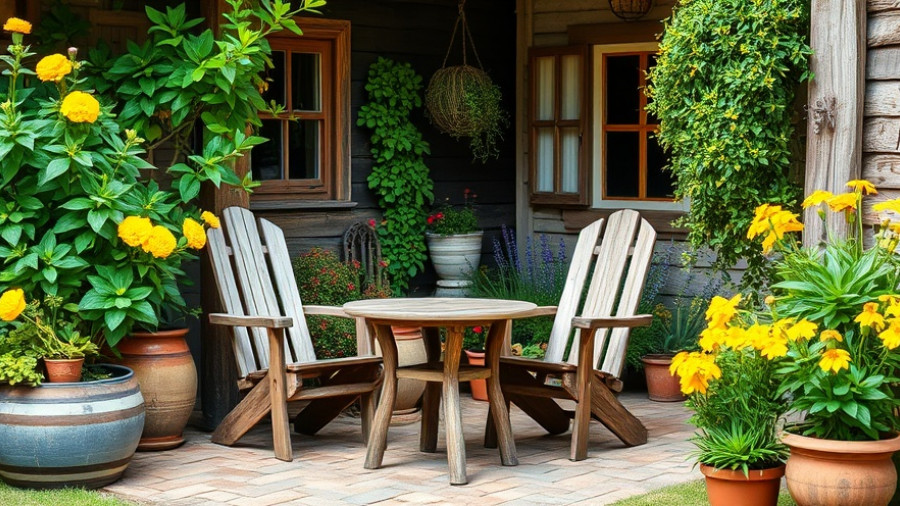
The Transformative Power of Moss in Urban Design
As cities grow and evolve, so does the need for innovative methods to combat pollution and enhance urban biodiversity. In recent years, the spotlight has turned toward an unexpected ally in this struggle: moss. Unlike traditional plants that flourish throughout cities, moss offers unique benefits that have only recently begun to be harnessed effectively in construction. Its ability to absorb air pollutants, manage heat, and even tackle rainwater runoff highlights moss as not only an ecological powerhouse but as a crucial player in sustainable architecture moving forward.
In 'Every Building in 2050 Will Be Covered in THIS!', the discussion dives into the potential of moss in architecture, exploring insights that sparked deeper analysis on our end.
Why Choose Moss? Exploring Its Versatility
Moss might seem humble, but its capabilities are anything but. Dating back approximately 450 million years, moss can survive in conditions that many other plants cannot, making it a resilient choice for green architecture. Not only does it capture particulate matter and nitrogen dioxide from the air but it can also thrive in dry conditions, going dormant rather than succumbing to the elements. This unique characteristic comes from its biological structure, which includes extensive surface area that facilitates high rates of pollution absorption.
Turning Traditional Construction on Its Head: Bioreceptive Concrete
At the forefront of this movement in green architecture is Alive Labs in London, which is innovating with bioreceptive concrete. This sustainable material, designed to promote the growth of moss, perfectly embodies the trend of eco-conscious building practices. Utilizing an ancient Amazonian recipe, Alive Labs blends recycled materials to create a carbon-negative substrate that not only supports moss growth but enhances its nutrient absorption capabilities. By developing a system that makes installation simple, they are setting a new standard for urban greening projects.
Fire Safety: Overcoming a Major Obstacle in Green Walls
The path to incorporating green walls isn’t without its challenges, particularly regarding fire safety. Traditional green walls often consist of organic materials that, while aesthetically pleasing, pose significant fire risks. Recognizing this, Alive Labs engineered their moss panels to be cellularized, ensuring that fire cannot spread easily through their systems. This innovative approach minimizes combustible materials while enhancing the overall safety of urban buildings. Architects and builders can now confidently introduce greenery into their designs, providing both beauty and security to urban landscapes.
Ornamentation Through Nature: A New Architectural Frontier
Architectural designs have seen a trend toward minimalism over the past few decades, but with the introduction of bio-integrated designs featuring moss, there’s a resurgence of ornamentation. Alive Labs encourages architects to view moss as a medium for creativity, enabling them to craft geometrically intricate patterns while promoting biodiversity. This shifts the narrative around architecture from sterile and simplistic to lush and vibrant, reinstating a connection with nature.
Future Predictions: Moss as a Standard in Urban Design
Looking ahead, the embrace of moss and bioreceptive technologies could mark a significant turning point in how we think about cityscapes. As environmental issues gain urgency, urban planners and homeowners alike will increasingly seek solutions that not only beautify spaces but also purify the air and foster biodiversity. The moss revolution is just beginning; if we invest in integrating these natural solutions into our built environments, we can transform how we live in cities.
Your Role in Promoting Sustainable Living
As an environmentally conscious homeowner, consider how you can incorporate innovative solutions like this into your living space. Whether through DIY projects or advocating for changes in your community, you have the power to contribute to a greener future. By opting for materials and practices that promote eco-friendliness, you can influence the broader trend toward sustainable living.
If you found this exploration of moss in construction intriguing, let us continue the conversation around sustainable architecture! Like and subscribe for more insights and innovative ideas on transforming our world—one green home at a time.
 Add Row
Add Row  Add
Add 



Write A Comment